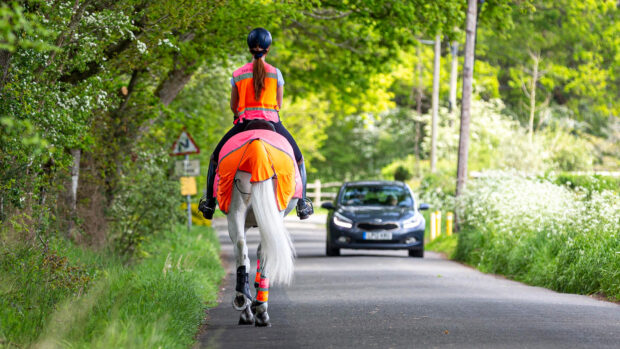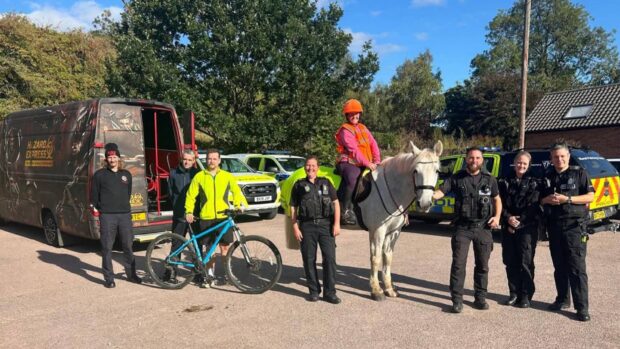Minister for the Horse Alun Michael has agreed to help combat the hazard posed to horse riders and drivers by the growing use of stone mastic asphalt as a road surface dressing.
First developed in Germany in the 1960s, stone mastic asphalt was tested in the UK in the mid-Nineties and quickly became a popular road surface because it is very durable and reduces noise. Until recently, it was only used on major carriageways but it has now been rolled out to all roads at the behest of the Highways Agency.
However, stone mastic asphalt is slippery and can prove dangerous to horses. “It is so slippery it’s like glass,” says Sheila Hardy, the BHS Head of Safety.
Alerted by a growing number of members reporting incidents, the BHS started looking into the problem and discovered that the material, which is made to EU standard, has commonly been used on the Continent where it hasn’t given any headache to riders and horses.
The problem, Hardy thinks, is that the mixture used in Britain is slightly different and it is laid out differently.
“If it works in Europe, why doesn’t it work here?” she asks. “It’s something the UK are doing at the time of the final coat dressing which is wrong. If it was put down properly so it gave adhesion to horse hooves, it would be fine.”
The BHS began discussing stone mastic asphalt usage with local authorities. Some were very responsive and covered the roads with an anti-slip top dressing. Others, however, “are saying horses shouldn’t be on the road,” according to Hardy. The BHS decided to bring its concerns to DEFRA earlier in the year and this approach has now borne fruit because Michael has pledged to find a solution.
In a letter to the society, the Minister explains he raised the issue with the Department for Transport. They offered two alternative answers — applying grit as a top dressing or having horses use road nails — which, however, Mr Michael didn’t deem satisfactory.
“I am still concerned about the solutions offered, as the first one seems only to be a short term remedy, and the second, according to expert advice, is not suitable for any length of time, as it can risk a horse’s long term soundness,” he wrote.
The DfT also said that local highway authorities must provide verges where necessary but “there is a question over whether local highway authorities would always be able to provide a verge, or be prepared to accept the extra cost,” Michael said.
He has therefore asked Transport Minister Tony McNulty to consult DEFRA on “best practice guidelines” for the use of stone mastic asphalt as a road surface. “I have pointed out that it is vital that local highway authorities have a full picture of all user needs, and particularly vulnerable users such as horse riders, when carrying out road surfacing work,” Michael wrote.
The BHS have welcomed the Minister’s commitment enthusiastically, but remain concerned that it may take a long time to resolve the situation.
“Alun Michael has been very good and his letter is very positive,” says Hardy. “But I’m not entirely sure how it’s going to work from the bottom up or how long it will take. I can’t see it going away overnight.”


